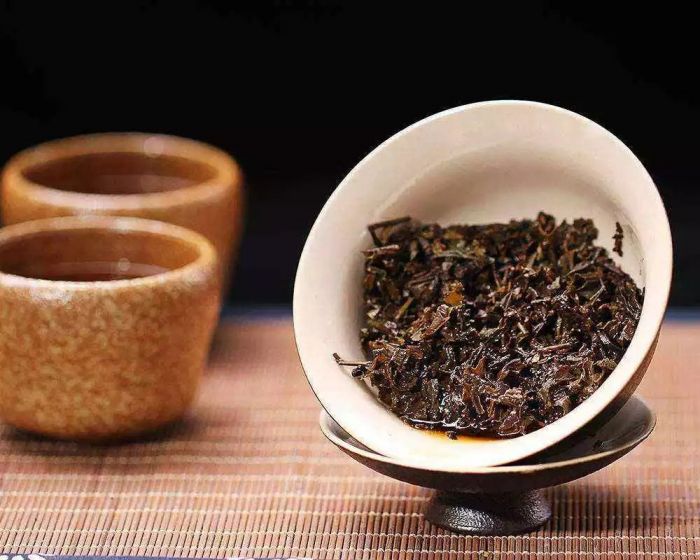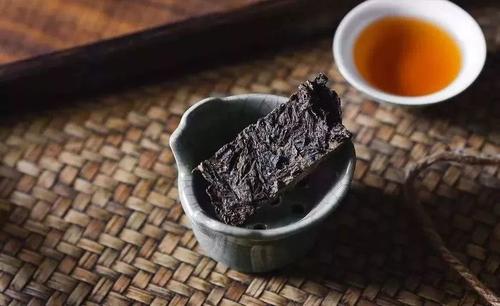Dark Tea, a post-fermented tea, is one of six major types of Chinese teas. The tea product is dark in color, hence the name. Generally, it is made through the processes of fixation, rolling, piling and drying. The use of dark tea dates back to more than 400 years ago. It is mainly grown in Guangxi, Sichuan, Yunnan, Hubei, Hunan, Shaanxi, and Anhui.
Based on the region, dark tea can be divided into the following types:

Hunan Dark Tea was originally produced in Anhua and now is also produced in Taojiang, Hanshou, Ningxiang and other places. It is made through the processes of fixation, early rolling, piling, repeated rolling, and drying. Its liquid is bright orange in color and has a mellow taste. Hunan Dark Tea is featured by time-honored history, high yield, excellent quality and abundant varieties.
Anhui Guyi Dark Tea is grown in Yixian County, Huangshan City, Anhui Province, China. It is pitch-black in color. The liquid is reddish in color and has a mellow taste. It can help you to clear heat, remove toxicity, quench thirst, and so on.

Hubei Dark Tea mainly refers to “Qingzhuan Tea” or Blue Brick Tea. There are a large number of famous Hubei dark teas, such as Laoqing Dark Tea. They are mainly produced in Puyi, Xianning, Tongshan, Chongyang, and Tongcheng in Hubei province. Hubei Laoqing Dark Tea is highly cost effective and has a very strong flavor that is cherished by dark tea lovers and the Tibetans.
Pu’er Tea is mainly produced in Xishuangbanna, Lincang, Pu’er and other areas of Yunnan Province, China.

Sichuan Dark Tea, also known as Sichuan Route Tea, can be divided into Southern Route Tea and Western Route Tea. Southern Route Tea is made through the processes of fixation, piling, steaming, distilling, and sun drying. Western Route Tea is made directly from sun-dried tea leaves.
Guangxi Liupu Tea is a specialty of Wuzhou City, Guangxi Zhuang Autonomous Region. Drinking this tea for a long time can help you to protect stomach and lose weight.
Black tea contains rich nutrients, the most important of which are vitamins and minerals. For residents of the Northwest region who lack vegetables and fruits in their diet, long-term consumption of Hunan Dark Tea is an important source of essential minerals and various vitamins for their bodies.
Dark tea is effective for improving digestion and regulating fat metabolism, because it is rich in dietary fiber. The stimulating effect of caffeine can increase the secretion of gastric juice, thereby increasing appetite and improving digestion.
Rich tea polysaccharides in dark tea helps lower blood lipids and promote peroxide activity in blood.
Catechin, theaflavin, theanine, and tea polysaccharides in dark tea help scavenge free radicals. So, dark tea has the effects of anti-oxidation and delaying cell aging.
Dark tea has an inhibitory effect on tumor cells.
Theanine, a unique amino acid in tea, helps inhibit the rise of blood pressure by activating dopaminergic neurons.
Tea polysaccharide complex in dark tea is the main ingredient for lowering blood sugar.
Theaflavin in dark tea is an effective free radical scavenger and antioxidant. It also has an obvious antibacterial effect on botulinum, staphylococcus aureus, capsular bacillus, and bacillus cereus.
The caffeine in black tea can act as a diuretic. Tea polyphenols in dark tea have a strong adsorption effect on heavy metal poisons.
